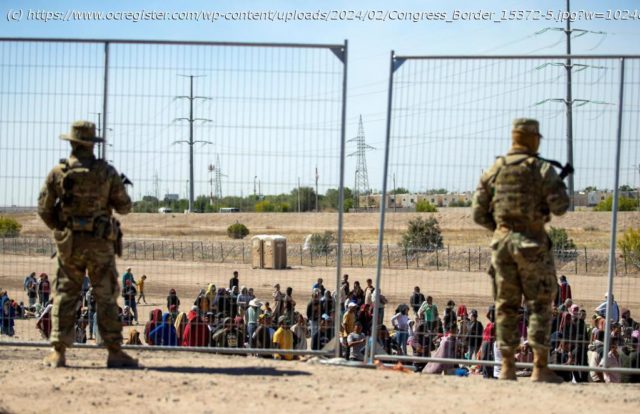A group of bipartisan senators and White House officials say they’ve negotiated a deal that would solve some of these problems. If passed, the measures would amount to some of the most significant changes in US immigration policy in decades.
Just about everyone agrees that whatever US immigration system is supposed to exist at the southern border — and beyond it — is badly broken.
Related Articles
National Politics |
What is and isn’t in the Senate bipartisan border security deal
National Politics |
More states offer health care coverage for certain immigrants, noncitizens
National Politics |
Biden is left with few choices as immigration takes center stage in American politics
National Politics |
Senate is headed for crucial test vote on new border policies and Ukraine aid
National Politics |
House GOP moves to impeach Homeland Security chief Mayorkas The number of unauthorized immigrants crossing the border keeps reaching record highs. The backlog of cases in US immigration courts has soared past 3 million. People trying to immigrate legally to the US face a maze of bureaucracy and lengthy delays.
A group of bipartisan senators and White House officials say they’ve negotiated a deal that would solve some of these problems. If passed, the measures would amount to some of the most significant changes in US immigration policy in decades.
That’s certainly a big if. While President Joe Biden has said he’ll sign the legislation, former President Donald Trump is pushing GOP lawmakers not to pass it. And House Republican leaders have called it “dead on arrival” even if it clears the Senate.
Still, this is a moment when it’s important to pay attention.
At a time when problems at the border often grab headlines, this deal — released Sunday evening after months of negotiations — offers a rare list of proposed solutions with a bipartisan bent.
“This is such a polarizing issue that the fact that some Democrats and some Republicans could come together is itself an event,” says Muzaffar Chishti, a senior fellow at the nonpartisan Migration Policy Institute.
The proposed changes to the immigration system are tied to foreign aid for Ukraine and Israel. The border bill also comes with a big budget – including large amounts of funding for enforcement.
“The bill is probably the most extensive border funding and security package that we’ve seen in decades,” says Greg Chen, senior director of government relations for the American Immigration Lawyers Association. “These are massive resources that will be given to DHS and other immigration agencies on the order of essentially $20 billion.”
So let’s take a look at several of the key provisions, how they’re different from the current landscape and some of the criticisms that are already coming up about them.
And let’s also look at some of the major things this deal doesn’t address.
What’s proposed: Once illegal border crossings reach a certain threshold, the Department of Homeland Security would be required to exercise a new emergency authority that bars migrants, except unaccompanied minors, from crossing the border between ports of entry. The authority would automatically kick in if crossings rise above 5,000 on average per day on a given week, or 8,500 in a single day.
The authority sunsets after three years and there are time limits on how many days it can be used.
How that’s different from now: If passed, this would be the first time a numerical threshold is put in place to invoke emergency measures at the border, Chishti says. “We have never put in numerical triggers. That’s important,” he says. In the emergency authority scenario, the only way migrants could seek asylum would be at ports of entry, where they must schedule appointments using a government app.






